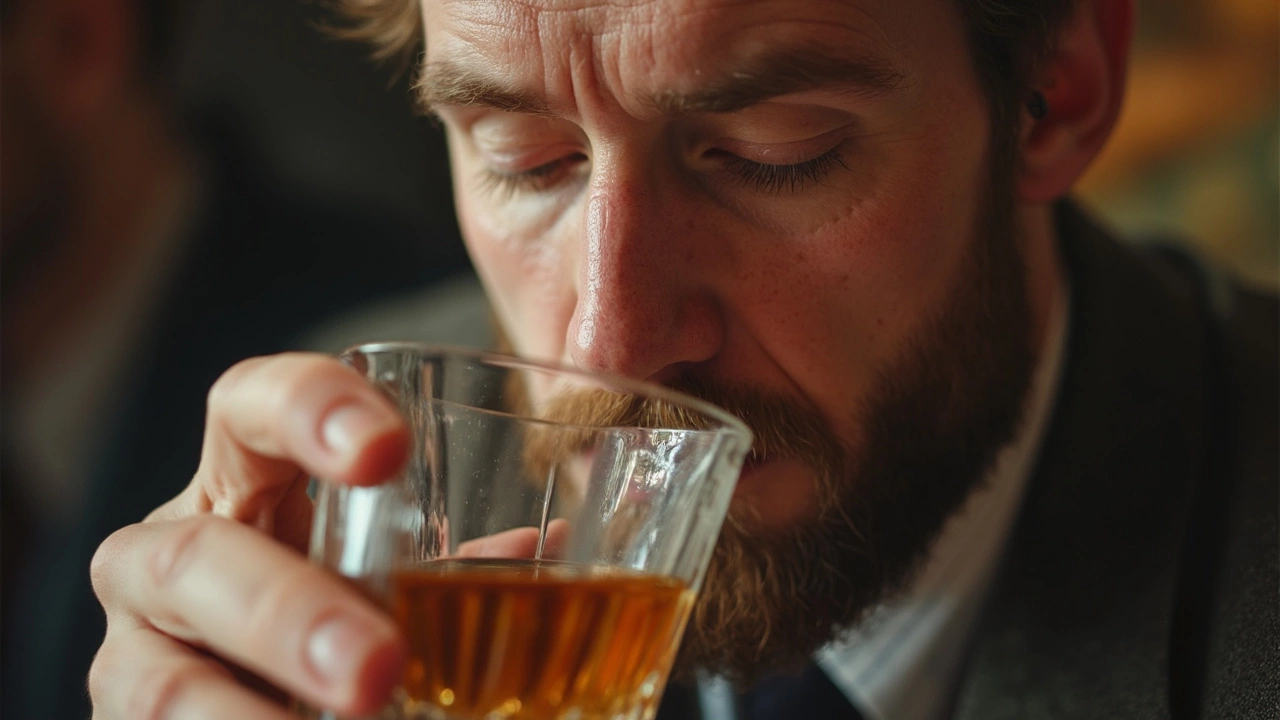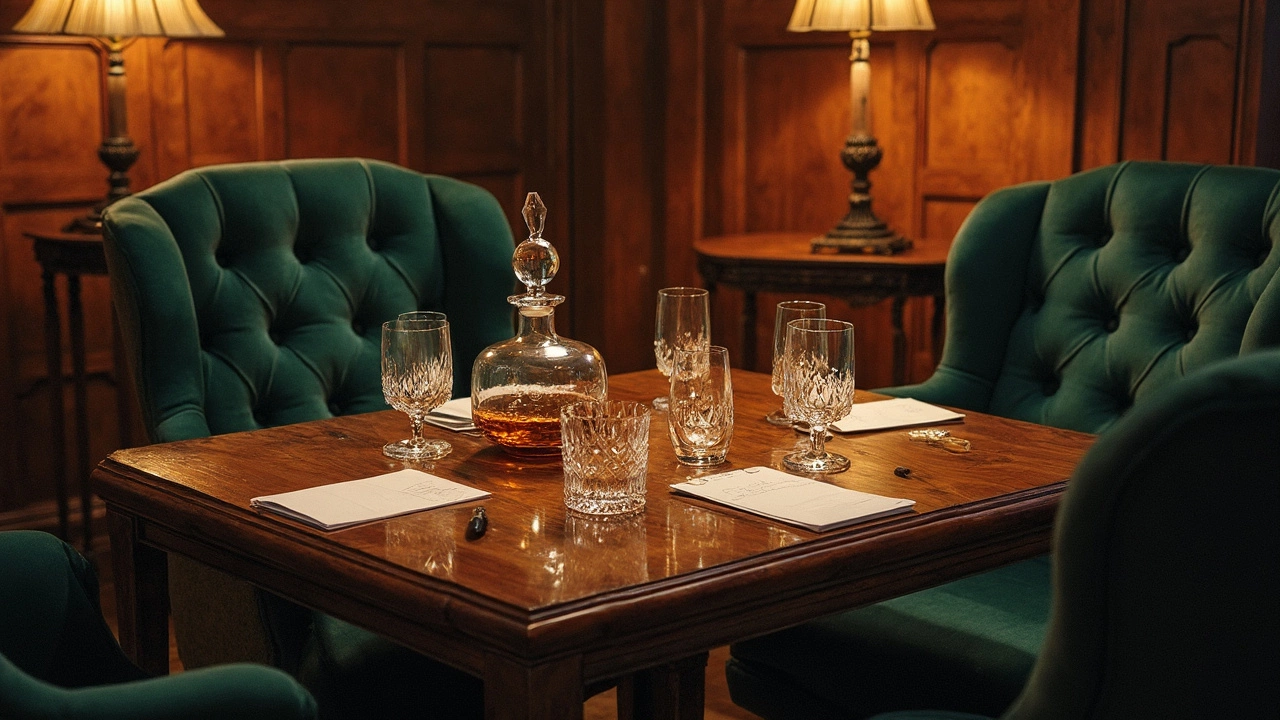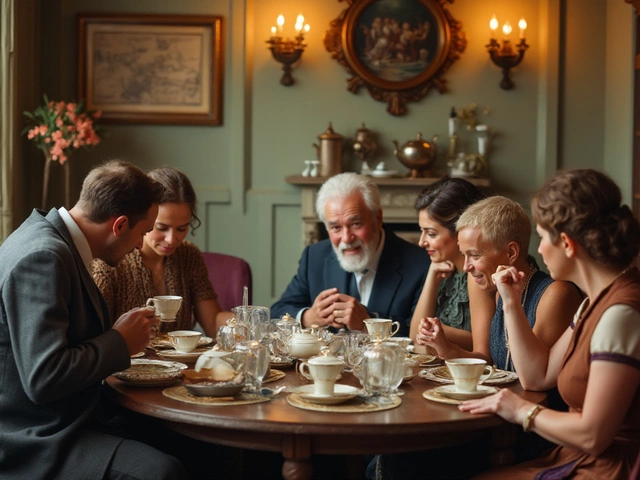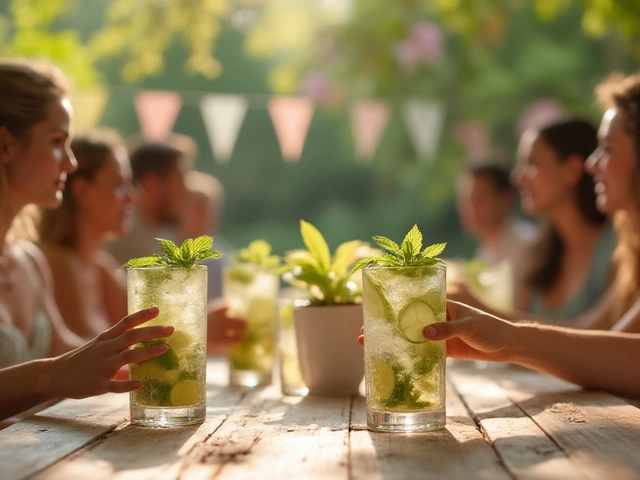Spirit tasting is much more than just having a drink; it's about the experience, the atmosphere, and understanding the unique flavors each spirit brings to the table. Whether you're a seasoned taster or just starting out, setting up the right environment is key. You don't need a fancy setup, but a few basics can elevate the whole experience.
Start by choosing the right glassware. Believe it or not, the shape of your glass can affect how you perceive the aroma and flavor. For most spirits, a tulip-shaped glass is ideal as it concentrates the aromas towards your nose, enhancing the tasting experience.
Next up is lighting and ambiance. Make sure there's enough light to properly see the spirit's color—yes, that matters! Colors can give you clues about age, ingredients, and the type of cask used for aging.
Choosing your spirits is the fun part. You don't need a huge selection; start with a few bottles that interest you, perhaps a mix of different types like whiskey, gin, and rum. Aim for variety, but don't go overboard; too many choices can overwhelm your palate. Three to five different spirits is plenty for one session.
Once you're all set, it's time to dig into the art of smelling and tasting. Begin by swirling the spirit gently in its glass, releasing its oils and aromas. Take a moment to enjoy the smell before taking a small sip, letting it explore every corner of your palate before swallowing slowly.
- Setting Up Your Tasting Environment
- Choosing the Right Spirits
- The Art of Smelling and Tasting
- Understanding Flavor Profiles
- Pacing and Palate Cleansing
- Recording and Sharing Your Impressions
Setting Up Your Tasting Environment
Creating the right environment for a spirit tasting sets the tone for the whole experience. It’s not about having a fancy setup; it’s about making sure everything is in place to enhance your senses. Let’s walk through what you'll need to make it feel just right.
Glassware Matters
Not all glasses are created equal when it comes to spirit tasting. The shape and size of the glass can dramatically affect how you perceive a spirit. A tulip-shaped glass, for example, helps concentrate aromas toward your nose, allowing you to catch the subtle nuances of each spirit. If you don’t have a collection of fancy glasses, don’t sweat it. Regular whiskey or wine glasses can do the trick as they still offer a decent vessel for scent and taste.
Lighting for Excellence
Lighting plays an unsung hero role in tasting. You want enough light to see the spirit’s color clearly because its hue can be a giveaway about its age or what cask it’s been matured in. Natural light works best, but if you’re indoors at night, try to use warm lights without too much glare.
Ambiance and Space
The setting for a spirit tasting should be comfortable yet minimalistic, without too many distractions. You don’t have to redecorate your living room, but clearing clutter helps you and your guests focus more on the tasting itself. Keep some water and fresh bread or crackers handy—they’re perfect for cleansing the palate between tastings.
Tasting Order
If you're tasting multiple types of spirits, the order you taste them in matters. Traditionally, you should begin with lighter spirits and move to the heavier ones. Starting with a gin before moving on to whiskey and then ending on a complex rum can help your palate adjust and pick out the unique flavors without the previous spirit overshadowing the next.
Other Equipment
Even though you don't need a lot of specialized equipment, a few extras can make the experience smoother. A notepad or tasting sheet is great for jotting down notes and impressions as you go along, and an app can do this digitally if you prefer. Having some water handy is also crucial, as staying hydrated keeps your palate fresh and ready for the next sip.
Choosing the Right Spirits
Alright, so you're all set to dive into the world of spirit tasting. But where do you start with picking the right ones? First things first, let's think through what you want to explore. Are you curious about understanding the subtle differences between a bourbon and a rye, or perhaps you want to know how a London Dry stacks up against a New Western gin?
A good starting point is to grab one type of spirit — like whiskey, gin, or rum — and explore a few variations within that category. Let's say you're interested in whiskey; consider sourcing a bottle each of bourbon, Scotch, and Irish whiskey. This will give you a spectrum of flavors and profiles even within a single category.
Understanding Flavor Profiles
Every spirit has its own set of flavors, often described in tasting notes. With whiskey, for example, you might find notes of vanilla, toffee, or even smokiness. Gins, on the other hand, might range from citrusy to spicy, with lots of botanical flavors in between. Keep an eye on the labels — distilleries often provide these notes as a guide. It’s fun to try and pick out these flavors yourself!
You don’t need to go all out either. Three to five bottles should be plenty for a session. Too many can overwhelm your taste buds or blur the lines between each spirit. Always aim for quality over quantity.
Source Locally and Explore Regions
If you're up for an adventure, consider checking out local distilleries or regional specialties. Whether it's a Tasmanian single malt or a gin infused with Aussie native botanicals, sourcing locally not only supports small businesses but introduces unique flavors you might not find elsewhere.
- For whiskey: Look for differences in age and cask finish.
- For gin: Explore based on different botanicals used.
- For rum: Compare white rum against dark or flavored versions.
Just remember, there's no one-size-fits-all in spirits. Each bottle is like a little story with its history and craftsmanship — enjoy the journey of discovering them!
The Art of Smelling and Tasting
Diving into spirit tasting means engaging all your senses, especially smell and taste. It's not just about drinking; it's about savoring each nuance and discovering what makes each spirit unique.
Smelling: The First Impression
Start by holding your glass at chest level and look at the color. Then bring it up to your nose. Give it a gentle swirl to release the aromas, and take a moment to appreciate them. Don't rush it. The aroma sets up your taste buds and prepares them for what's coming. Neat trick, right?
Experts often recommend taking three gentle sniffs. Why? Each whiff reveals something different, from sweet notes to more complex scents. As whisky expert Richard Paterson says, "
Remember, the nose tells a story before the first sip touches your lips."
Tasting: More Than Just a Sip
Finally, take a small sip and let it sit on your tongue. Let it roll around and hit different taste zones. Sweetness, sourness, and bitterness come out as you do this. After a second, swallow slowly.
Pay attention to the finish and how the flavors evolve after swallowing. Some spirits will leave a warm, lingering taste – others might be more fleeting.
Breaking It Down: Flavor Profiles
This is where you start identifying flavors. Oak? Vanilla? Spice? Jot them down as you identify them. It's okay if you're not a pro yet; the more you practice, the better you get at picking out notes.
Want a tip? Use a flavor wheel; it’s a handy tool to give you a vocabulary for what you're tasting. It can help match what you're picking up with a specific word, making it easier to remember.
Enjoy and Stay Curious
Tasting isn't about getting things "right"; it's about exploring and enjoying. Every session adds to your knowledge and can make future tastings more enjoyable.

Understanding Flavor Profiles
Getting to grips with flavor profiles is like unlocking a whole new level of enjoyment in spirit tasting. Each spirit carries its own symphony of flavors, which can range from sweet and fruity to rich and smoky. But how do you start to identify these?
Breaking Down the Basics
When tasting, think about the basic tastes: sweet, sour, salty, bitter, and umami. Spirits often highlight one or more of these. A whiskey might have a sweet note from the oak barrels, while a gin could lean on the bitter side due to its botanicals.
The Role of Aroma
A big part of tasting is actually smelling. Before you sip, take a moment to breathe in the spirit's aroma. In a good spirit, the scent should give you clues about the flavor profile you’re about to experience. For example, a rum might give off hints of vanilla and caramel, telling you to expect sweetness.
Common Flavor Descriptors
To describe what you're tasting, it helps to have some common terms in your back pocket. Here are a few to get you started:
- Fruity: Notes like apple, pear, citrus, or even exotic fruits.
- Spicy: Think cinnamon, pepper, or clove.
- Smoky: Often found in peaty whiskies.
- Herbal: Juniper, thyme, or even mint can come through.
- Woody: This comes from aging, with oak or cedar notes.
Practicing with a Purpose
The key to understanding flavor profiles is practice. Try jotting down what you think you taste, even if you're not sure. Over time, you’ll notice patterns. Maybe you'll discover you have a penchant for smoky Scotch or prefer the rich, dark chocolate notes in certain whiskies.
Pacing and Palate Cleansing
When it comes to spirit tasting, pacing yourself is crucial. Drinking too fast can overwhelm your taste buds and dull your ability to notice the subtleties in each spirit. So, how can you ensure you're taking it slow?
Here's a quick tip: always start with the lightest spirits first and move to the heavier ones. This means beginning with something like a gin before heading into the deeper, richer whiskeys and rums.
Why Pacing Matters
It might sound obvious, but sipping slowly lets you truly explore each spirit. Taking your time helps in identifying unique flavors that might be missed otherwise. Think of it as savoring each sip the way you'd savor a treat—slowly and mindfully.
The Art of Palate Cleansing
Ever noticed how some tastings include bread or crackers? These are palate cleansers, and they really do make a difference. After tasting a spirit, cleansing your palate with something neutral helps reset your taste buds for the next sip.
- Water: It's the classic choice. Have a glass at hand and take small sips between tastings.
- Crackers or Bread: These absorb the flavors left on your palate. Opt for unsalted varieties for the best effect.
- Green Apples: This might surprise you, but a slice of apple can effectively reset your palate, preparing it for the next tasting.
Maintaining a comfortable pace and cleansing your palate also means you're able to enjoy spirit tastings over a longer period, gaining a deeper appreciation for the spirits you've chosen. Remember, it's all about the experience, not about how quickly you can go through the bottles.
Recording and Sharing Your Impressions
So, you've tasted the spirits, sniffed them, and let them dance on your palate. Now comes the part where you record what you think and feel. It’s like jotting down your own little discoveries. Don't worry, you don't need to be Shakespeare to do this.
Keeping a Tasting Journal
First, consider keeping a tasting journal. This might sound a bit old-school, but it's super handy. Write down the name of the spirit, the date, and your initial reactions. Describe the aroma, taste, finish, and any unusual notes. Were there hints of vanilla, tobacco, or spices? These little details will help you remember what stood out.
Pro Tips for Note-Taking
- Be Honest: Write what you really taste and smell. No need to echo what others say. Your palate is unique!
- Use Comparisons: Compare the flavors to foods or smells you know well. It can help make sense of complex flavors.
- Rate it: If you like, give each spirit a score. Perhaps 1 to 10, where 10 is 'mind-blowingly good.' It can help you remember your favorites.
Sharing Your Experiences
Once you’ve got your notes down, why not share your thoughts? Talking about spirits with friends, whether they're seasoned tasters or fellow novices, can be fun. It opens up new perspectives and you might learn something new.
- Social Media: Share brief reviews on platforms like Instagram or Twitter. It's a great way to connect with other enthusiasts.
- Online Forums: Jump into discussions on sites like Reddit or specialized spirit forums. These places are full of people who love sharing tips and feedback.
| Platform | Engagement Tips |
|---|---|
| Use hashtags like #SpiritTasting or #WhiskeyLover to reach more people | |
| Join subreddits like /r/tasting to share and learn more |
Sharing your impressions can make the whole process more engaging and rewarding. Plus, it encourages you to fine-tune your skills. Who knows, you might even inspire someone else to start their own spirit tasting journey!


